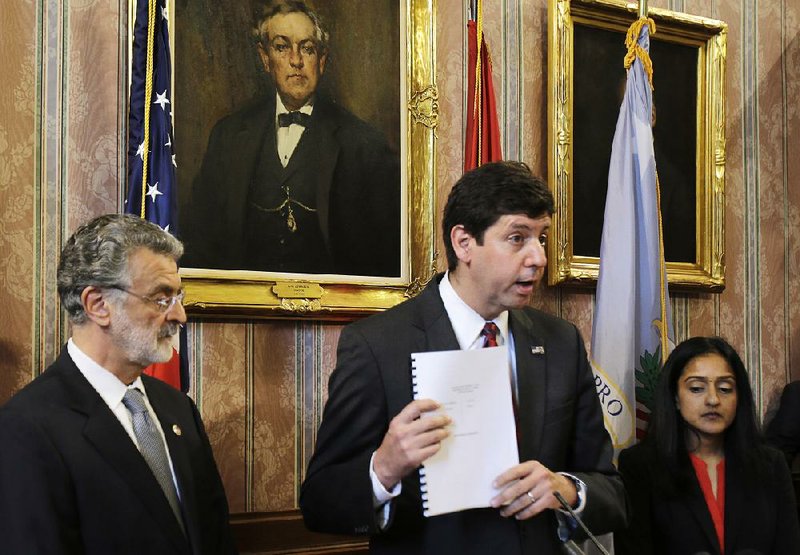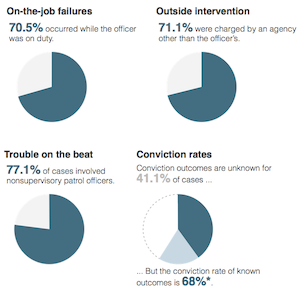CLEVELAND -- Cleveland agreed to sweeping changes in how its police officers use force, treat the community and deal with the mentally ill, under a settlement announced Tuesday with the federal government that will put the 1,500-member department under an independent monitor.
The settlement was made public three days after a white Cleveland police officer was acquitted of manslaughter for his role in a 137-shot barrage of police gunfire that left two unarmed black suspects dead in a car in 2012.
Mayor Frank Jackson said the plan that was worked out over five months of negotiations with the U.S. Justice Department will be expensive and take years to implement. But he said he sees it as a chance to set an example for other cities.
The changes come amid tension around the U.S. over a string of cases in which blacks died at the hands of police.
"As we move forward, it is my strong belief that as other cities across this country address and look at their police issues in their communities, they will be able to say, 'Let's look at Cleveland because Cleveland has done it right,'" Jackson said.
In December, after an 18-month investigation prompted in part by the 2012 shooting, the Justice Department issued a report accusing Cleveland police of a pattern of excessive force and other abuses.
The settlement is an expansive list of items aimed at easing tension between the police and the city's residents, especially in the black community. Cleveland is 53 percent black, but about two-thirds of its police officers are white. The police chief is black and the mayor is black and Italian.
The changes were outlined in a 105-page consent decree filed in federal court. It calls for new guidelines and training in the use of force; a switch to community policing, in which officers work closely with their neighborhoods; an overhaul of the machinery for investigating misconduct allegations; modernization of police computer technology; and new training in avoiding racial stereotyping and dealing with the mentally ill.
An independent monitor approved by the court will oversee the police force's compliance.
Cleveland also agreed to hire a civilian to lead its internal affairs unit and to appoint an inspector general to investigate police misconduct and analyze policies and trends. The city also will form a civilian advisory panel to review policies and advocate better community relations.
The worst examples of excessive force in the Justice Department's report involved officers who endangered lives by shooting at suspects and cars, hit people over the head with guns and used stun guns on handcuffed suspects.
The instances often went unreported and uninvestigated, investigators found. Only six officers had been suspended for improper use of force over a three-year period.
The rules prohibit officers from using force against people simply for talking back or as punishment for running away. Pistol-whipping is prohibited, as is firing warning shots, according to the agreement.
Some use-of-force data will be collected digitally. Stun guns, for instance, leave a digital record when they are used, and the settlement calls for periodic checks to ensure that a weapon's data match reports filed by officers. The document calls for investigations when an officer's account and the stun gun's internal record do not match. In other cases, officers will be required to self-report use of force, such as when they remove a gun from its holster, making accurate documentation harder to monitor.
U.S. Attorney Steven Dettelbach said the overhaul "will help ensure the many brave men and women of the Cleveland Division of Police can do their jobs not only constitutionally, but also more safely and effectively."
Steve Loomis, president of the Cleveland Police Patrolmen's Association, said he and the union's attorneys are still studying the agreement.
"I'm hopeful it has reached some good conclusions," Loomis said. "But the devil is always in the details for these kinds of things."
Saturday's verdict by a judge in favor of officer Michael Brelo led to a day of mostly peaceful protests but also more than 70 arrests. Most people were arrested on misdemeanors, but four were arraigned Tuesday on felony charges.
Dozens of church parishioners also protested the acquittal in a downtown march Tuesday afternoon just before officials announced the settlement.
Information for this article was contributed by Mark Gillispie of The Associated Press and by Mitch Smith, Matt Apuzzo and Rodney Bengston of The New York Times.
A Section on 05/27/2015

